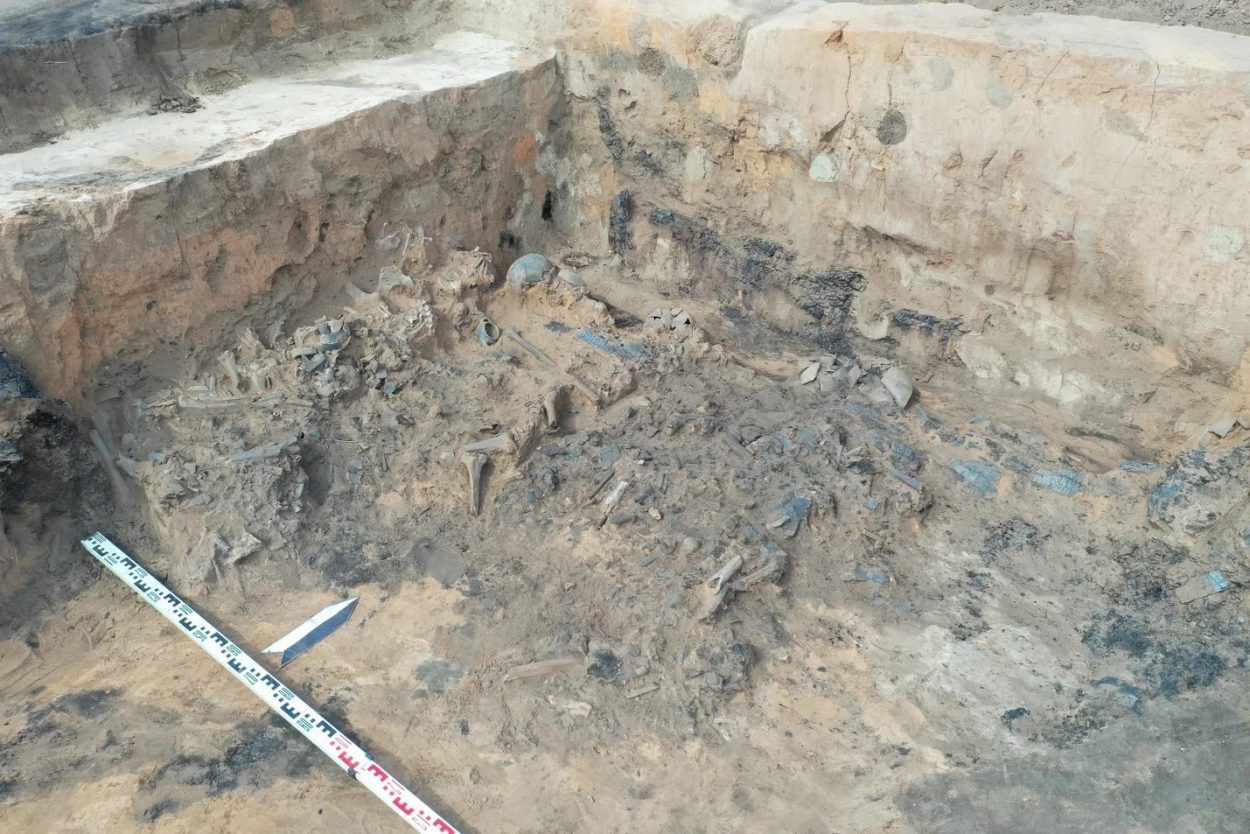Archaeologists from the Siberian Federal University have uncovered a kurgan tomb from a previously unknown culture.
The discovery was first made when workers were clearing land in preparation for a new cemetery near the city of Krasnoyarsk, located in Siberia, Russia.
The clearing works bulldozed a 30m diameter mound which they thought at the time was a natural hill, however, much of the inner tomb has survived, which researchers from the Siberian Federal University, led by Dr Dimitry Vinogradov, have been excavating since 2021.
The team found that the tomb contains the remains of 50 bodies, buried alongside numerous grave goods, which were placed in a large rectangular pit, lined with timber and carpeted in birch bark. It likely that the tomb had a wooden roof, but this was destroyed during the land clearance.
The site dates from around 2,000-years-ago and belongs to a previously unknown Scythian-type culture. The Scythians were an ancient Eastern Iranian equestrian nomadic people who had migrated from Central Asia to the Pontic Steppe in modern-day Ukraine and Southern Russia from approximately the 7th century BC until the 3rd century BC.
Buried with the deceased are beads, bronze plaques, miniature symbolic bronze daggers and battle axes, as well as knives, mirrors, needles and ceramic vessels. Most notably is the discovery of a plaque depicting a stag, a popular motif in Siberian Scythian animal art.
The researchers believe that the site served as a family tomb for generations, after which, was sealed off and set on fire. This is supported by the discoloration found in the soil, which suggests that it was subject to intense heat. The tomb would then have been covered in soil to create what the people of the steppe call a kurgan (burial mound).
Based on the findings, Dr Vinogradov and his team believes that the tomb belongs to a transitional culture they now call “Tesinian” (first suggested by the late archaeologist and historian Mikhail Gryaznov, based on an archaeological site on the banks of the River Tes in the Minusinsk Basin), which likely emerged on the outskirts of the known territories of the Tagar culture during the 2nd or 1st century BC.
Header Image Credit : Dimitry Vinogradov
Part of our mission statement at HeritageDaily is to provide independent, impartial and honest journalism. With respect of this, and the monetary gain from promoting state funded projects by the Russian Academy of Sciences, we support the Ukrainian people in their struggle and have donated to the Ukraine Humanitarian Appeal to help the DEC charities provide for the displaced and refugees caused by the conflict.





